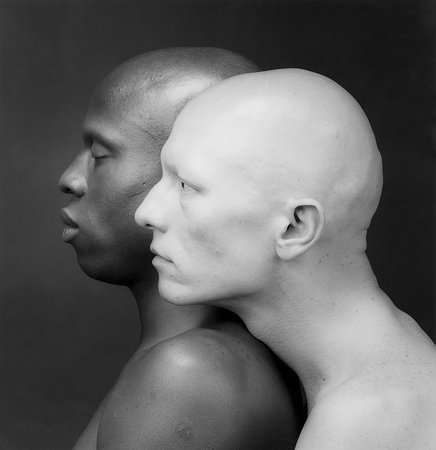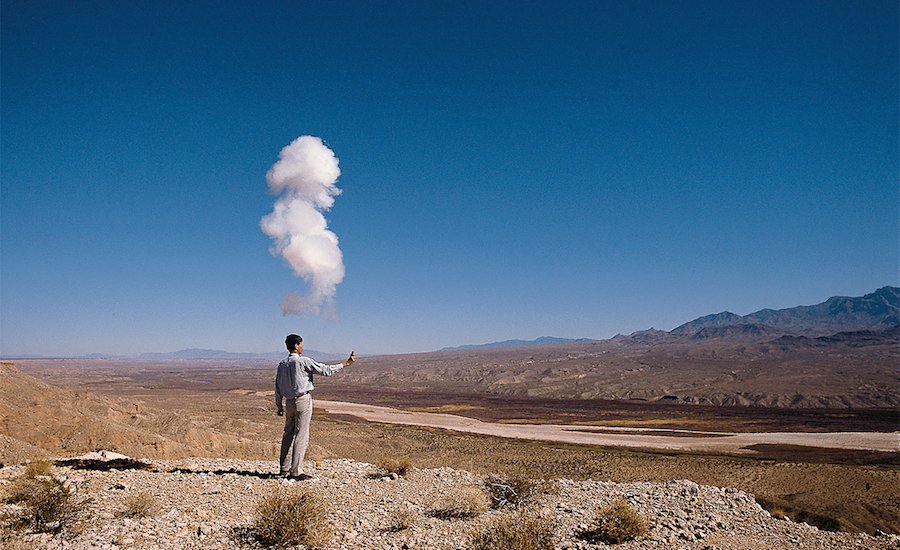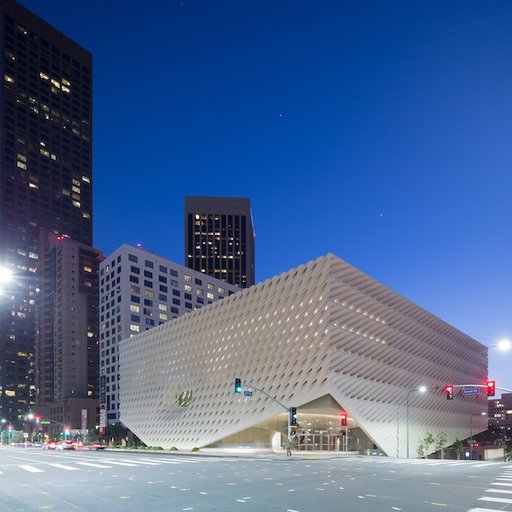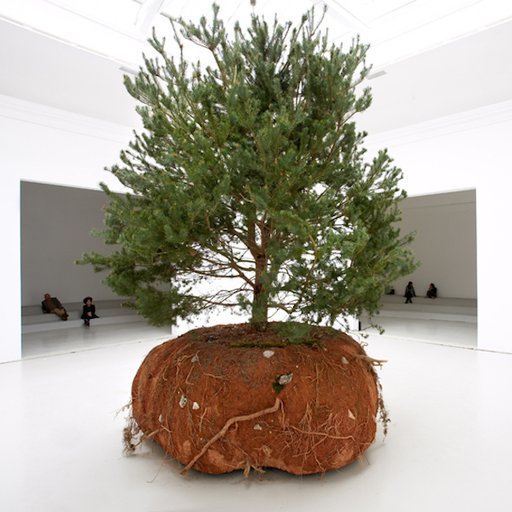In its 31 years, the Sundance Film Festival has showcased many documentaries and features on art and artists. (Miranda July made her big break with You Me and Everyone We Know in 2005, Marina Abramovic stole the stage with the documentary The Artist is Present in 2012, which later won a Peabody Award, and even Banksy's Exit Through the Gift Shop premiered at the festival in 2010.) This year was no different, with a bumper crop of movies profiling talents and projects from around the globe. Here are five that caught our reporter’s eye.
MAPPLETHORPE: LOOK AT THE PICTURES
 Ken Moody and Robert Sherman (1984), from Randy Barbato and Fenton Bailey's Mapplethorpe: Look At the Pictures. Courtesy the Robert Mapplethorpe Foundation.
Ken Moody and Robert Sherman (1984), from Randy Barbato and Fenton Bailey's Mapplethorpe: Look At the Pictures. Courtesy the Robert Mapplethorpe Foundation.
It’s been nearly 27 years since Robert Mapplethorpe’s passing and the subsequent culture-wars controversy around the exhibition of his work. The heat has died down, but the art’s impact endures. Directors Randy Barbato and Fenton Bailey (the powerhouse duo behind the production company World of Wonder) tell the late photographer’s story, from the dorms of the Pratt Institute and his discovery of Polaroid film to his Hasselblad black-and-whites and their candid exploration of homosexuality. The documentary focuses less on the controversy around the exhibition of Mapplethorpe’s works than it does on the artist as a person, interviewing close friends like Patti Smith (who wrote a memoir about her friendship with Mapplethorpe, Just Kids, in 2010) and family members like the artist’s brother Eddie to reveal Mapplethorpe’s narcissistic tendencies (he made Eddie change his name as soon as he started to make a name for himself as a photographer). The film also goes behind the scenes of an upcoming Mapplethorpe retrospective (at the Getty and LACMA, due to open in March); Getty curators are shown choosing works for exhibition. But the real draw of Mapplethorpe: Look at the Pictures is there in the title: it shows the images as a window into the artist’s life. (Premieres on HBO April 4)
PLAZA DE SOLEDAD
 A still from Maya Goded's Plaza de Soledad.
A still from Maya Goded's Plaza de Soledad.
Mexican photographer Maya Goded spent five years documenting middle-aged and elderly sex workers on the streets of Mexico City. Those images had already filled a book, Plaza de Soledad (2006) when Goded decided it was time to experiment with a new medium: film. Plaza de Soledad is a rich portrait of women—ages 50 to 80—working the streets of La Merced, the city’s red light district, at night for their livelihood. Goded’s style of filming is much like her photographic style; she pulls back to show the subjects in full frame, to see their surroundings—and their bodies—so that the audience can understand the context of these women’s lives. The film can be seen as Goded’s photographs come to life, amplifying the humor, pain, and acceptance of her still work.
LO AND BEHOLD, REVERIES OF THE CONNECTED WORLD
 A still from Werner Herzog's Lo and Behold, Reveries of the Connected World. Credit: Peter Zeitlinger
A still from Werner Herzog's Lo and Behold, Reveries of the Connected World. Credit: Peter Zeitlinger
The acclaimed German director Werner Herzog has trained his lens on technology, capturing both its potential and its pitfalls, in this sweeping documentary. It starts in the birthplace of the Internet with Leonard Kleinrock, the quirky computer science professor who helped to develop the technology that eventually made the first Internet connection in 1969. Kleinrock, as giddy as a kid in a candy store, guides the camera crew into the lab where that momentous connection was made (in a stroke of fate, “login” became “lo” when the systems crashed, and thus gave this film its name). Ideas and theories unspool in chapters on alternative theories of the Internet, Internet addiction, robotics, and the potential colonization of Mars (for which Herzog turns to SpaceX founder Elon Musk). Finally, the experts muse on where the Internet will take us next: a brain surgeon believe that MRI machines will become a simple helmet; a Carnegie Mellon student believes that robots will best World Cup champions at soccer; a scientist predicts that kids of the future may not even need human interaction. The film doesn’t rest on one opinion; instead, viewers must sort through the information and create their own sense of meaning, much as they do on the Internet. (Theatrical release in 2016)
SKY LADDER: THE ART OF CAI GUO-QIANG
 A still from Kevin McDonald's Sky Ladder: The Art of Cai Guo-Qiang. Credit: Hirolhara
A still from Kevin McDonald's Sky Ladder: The Art of Cai Guo-Qiang. Credit: Hirolhara
Cai Guo-Qiang’s work is best experienced in real time, which is what creates the sense of wonder in Kevin McDonald’s documentary Sky Ladder. The Chinese artist, whose mediums of choice are gunpowder and fireworks, is best known for the opening ceremony of the 2008 Beijing Olympics. The film just barely touches on this famous work, however, focusing instead on a project called Sky Ladder. This ambitious work, which Cai had attempted and failed to execute three times before its completion last year, was a 1500-foot ladder suspended from a hot air balloon and limned with fireworks so to depict a “ladder to the heavens” (in the artist’s words). Interweaving astounding visuals with Cai’s backstory—his childhood under the Maoist regime, his ascent to international fame, his collaborations with the Chinese government, and the inevitable censorship of his work—and astounding visuals, McDonald creates a portrait of an artist trying to balance his artistic vision with his patriotic spirit. Naturally, Sky Ladder culminates with a successful Sky Ladder, which serves as the pinnacle of both the documentary and Cai’s career.
CEMETERY OF SPLENDOR
 A still from Apichatpong Weerasethakul's Cemetery of Splendor. Courtesy Strand Releasing
A still from Apichatpong Weerasethakul's Cemetery of Splendor. Courtesy Strand Releasing
In his latest film, the Thai director Apichatpong Weerasethakul, the recipient of the Cannes Palm d’Or prize for Uncle Boonmee Who Can Recall his Past Lives (2010) uses no visual effects. Instead, Weerasethakul relies on dialogue to ignite the imagination of the audience. Jenjira Pongpas (one of Weerasethakul’s favorite actresses) plays Jen, a nurse taking care of soldiers who have contracted a mysterious sickness that induces a coma-like sleep. One of the soldiers awakes and Jen forms a bond with him, although it’s never fully realized since he continues to randomly collapse into slumber. There is of course, a reason for all this, tied to a deep mythology that’s explained to us by women who claim to be princesses but are in street clothes. The film is rife with hypnotic motifs—fans whirring, sprinklers churning—as if to lull the audience into a dream state. Just like the characters, you can’t assume that something is not true just because you cannot see it. (Limited screenings through Strand Releasing)



























